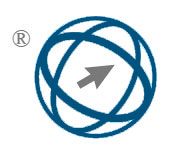A Review on Artificial Intelligence Based Heuristic Models for Brain Tumor Image Classification and Segmentation
Abstract
Even with the tremendous advancements in medical technology, the most laborious and complex work that doctors still have to do is segment tumors. Radiologists most commonly employ magnetic resonance imaging (MRI) to examine interior human body parts without dissecting them, although manual inspection is time-consuming and wastes valuable work hours. Since it might lead to early diagnosis, effective automated sorting of brain cancers from MRI images is crucial, reduce errors in work hours, propagate automation in tumor removal, and aid in treatment decision-making. Computer-aided image analysis can also be a potential solution for early disease detection, such as cancer or tumors. This paper seeks to emphasize the strategies in light of these challenges. For physicians, identifying tumors in the brain is still a highly challenging and lengthy procedure. despite the tremendous advancements in medical technology. Early and comprehensive brain tumor detection may result in higher survival rates since it enables effective and efficient treatment. Enhanced efficiency and consistent precision could come from the computerized recognition and categorization of brain tumors. However, it is well recognized that the strategy and picture modality have an impact on the accuracy performance of automatic detection and classification techniques. The latest detection methods are reviewed in this work along with their benefits and drawbacks.
Full Text:
PDFReferences
Abbasi, S &Tajeripour, F 2017, ‘Detection of brain tumor in 3D MRIimages using local binary patterns and histogram orientation gradient’,Neuro Computing, vol. 21, no. 9, pp. 526–535.
Aditi, P, Killedar Veena, P, Patil Megha, S & Borse 2012, ‘Content basedimage retrieval approach to tumor detection in human brain using magneticresonance image’, 1st International Conference on Recent Trends inEngineering& Technology, Mar-2012,Special Issue of InternationalJournal of Electronics, Communication & Soft Computing Science &Engineering, vol. 1, no. 1, pp. 1-15.
Agnieszka Wosiak& Danuta Zakrzewska 2018, ‘Integrating correlationbasedfeature selection and clustering for improved cardiovascular diseasediagnosis’, Complexity, Hindawi, pp. 1-11.
Alain Pitiot, Arthor W Toga, Nicholas Ayache & Paul Thompson 2002,‘Texture based MRI segmentation with a two stage hybrid neuralclassifier’, Proc of IEEE International Joint Conf on Neural Networks,vol. 3, pp. 2053-2058.
Alam MS, Rahman MM, Hossain MA, Islam MK, Ahmed KM,Ahmed KT, Sing, BC & Miah, MS 2016, ‘Automatic human brain tumordetection in MRI image using template-based k means and improved fuzzyc means clustering algorithm’, Big Data and Cognitive Computing, vol. 3,no. 2, pp. 1-27.
Aleksander, I 2009, ‘A brief introduction to weightless neural systems’, inEuropean Symposium on Artificial Neural Networks, pp. 299-305.
Amala Vetha, J, Natarajan, P & Karthika, A 2014, ‘Detection of braintumor from MRI scan using segmentation methods’, International Journalof Applied Engineering Research, no. 19, pp. 5809-5817.
Amarjot Singh, Shivesh Bajpai, Srikrishna Karanam, Akash Choubey &Thaluru Raviteja 2012, ‘Malignant brain tumor detection’, InternationalJournal of Computer Theory and Engineering, vol. 4, no. 6, pp. 1-12.
Asmaa M Mahmoud, Lamiaa ME Bakrawy& Neveen I Ghali 2017, ‘Linkprediction in social networks based on spectral clustering usingK-mediods and landmark’, International Journal of Computer Applications,vol. 168, no. 7, pp. 1-8.
Azhari, EE, Hatta M, Htike MM & Win, SL 2014, ‘Brain tumor detectionand localization in magnetic resonance imaging’, International Journal ofInformation Technology Convergence and Services (IJITCS), vol. 4,no. 1, pp. 2231-1939.
Bakas, S, Reyes, M, Jakab, A, Bauer, S, Rempfler, M, Crimi, A,Shinohara, RT, Berger, C, Ha, SM & Rozycki, M 2018, ‘Identifying thebest machine learning algorithms for brain tumor segmentation’,Progression Assessment, and Overall Survival Prediction in the BRATSChallenge, pp. 1-20.
Bhagat, JV &Dhaigude, NB 2017, ‘A survey on brain tumor detectiontechniques’, International Research Journal of Engineering andTechnology, vol. 4, no. 3, pp. 1795-1796.
Bidgood, D & Horii, S 1992, ‘Introduction to the ACR-NEMADICOMstandard’, Radio Graphics, vol. 12, pp. 345-355.
Binu Thomas PK & Nizar Banu 2018, ‘Brain tumor segmentation anddetection using MRI images’, International Journal of MechanicalEngineering and Technology (IJMET), vol. 9, no. 5, pp. 514-523.
Biradar, N & Unki, PH 2017, ‘Brain tumor detection using clusteringalgorithms’, in MRI Images, pp. 1587-1591.
Boberek, M & Saeed, K 2011, ‘Segmentation of MRI brain images forautomatic detection and precise localization of tumor’, Image Processing andCommunications Challenges, Springer, Berlin, Heidelberg, pp. 333-341.
Bushra Mughal, Muhammad Sharif & Nazeer Muhammad 2017, ‘Bi-modelprocessing for early detection of breast tumor in CAD system’, TheEuropean Physical Journal Plus, vol. 16, no. 4, pp. 132-136.
Caponetti, L, Castellano G & Corsini, V 2017, ‘MR brain imagesegmentation: A framework to compare different clustering techniques’,Information, vol. 8, no. 4, pp. 130-138.
Carass, Aaron, Jennifer Cuzzocreo, Bryan Wheeler M, Pierre-Louis Bazin,Susan Resnick, M & Jerry Prince, L 2011, ‘Simple paradigm for extracerebraltissue removal: Algorithm and analysis’, NeuroImage, vol. 56,no. 4, pp. 1982-1992.
Cha, S 2006, ‘Review article: Update on brain tumor imaging: Fromanatomy to physiology’, Journal of Neuro Radiology, vol. 27, pp. 475-487.
Chaddad Ahmad & Camel Tanougast 2016, ‘Quantitative evaluation ofrobust skull stripping and tumor detection applied to axial MRimages’, Brain Informatics, vol. 3, no. 1, pp. 53-61.
Chandra, Satish, Rajesh Bhat, Harinder Singh & Chauhan, DS 2009,‘Detection of brain tumors from MRI using gaussian RBF kernel basedsupport vector machine’, IJACT, vol. 1, no. 1, P. 46.
Chenxi Zhang, Manning Wang & Zhijian Song 2011, ‘A brain-deformationframework based on a linear elastic model and evaluation using clinicaldata’, IEEE Transaction on Biomedical Engneering, vol. 58, pp. 191-199.
Chithambaram, T & Perumal, K 2017, ‘Brain tumor detection andsegmentation in MRI images using neural network’, in InternationalJournal, vol. 7, no. 3, pp. 1-12.
Cho, K 2013, ‘Boltzmann machines and denoising auto encoders for imagedenoising’, in International Conference on Computer Vision and PatternRecognition, pp. 1-14.
Cover, T & Hart, P 1967, ‘Nearest neighbor pattern classification’, in IEEETransactions on Information Theory, vol. 13, no. 1, pp. 21-27.
Cui, S, Mao, L, Jiang, J & Xiong, S 2018, ‘Automatic semanticsegmentation of brain gliomas from MRI images using a deep cascadedneural network’, Hindawi Journal of Healthcare Engineering, pp. 1-20.
Deshmukh, RJ & Khule, RS 2014, ‘Brain tumor detection using ArtificialNeural network Fuzzy Inference System (ANFIS)’, International Journal ofComputer Applications Technology and Research, vol. 3, pp. 150-154.
Despotović, I, Goossens, B & Philips, W 2015, ‘MRI segmentation of thehuman brain: Challenges, methods, and applications’, Computational andMathematical Methods in Medicine’, pp. 1-20.
Dina Aboul Dahab, Samy SA Ghoniemy& Gamal M Selim 2012,‘Automated brain tumor detection and identification using imageprocessing and probabilistic neural network techniques’, InternationalJournal of Image Processing and Visual Communication, vol. 1, no. 2,pp. 21-32.
Ehab F Badran, Esraa Galal Mahmoud & Nadder Hamdy 2010, ‘AnAlgorithm for detecting Brain tumors in MR Images’, IEEE Conf.,pp. 368-373.
Fadoua Badaoui, Amine Amar, Laila Ait Hassou, Abdelhak Zoglat&Cyrille Guei Okou 2017, ‘Dimensionality reduction and class predictionalgorithm with application to microarray Big Data’, Journal of Big Data,Springer, vol. 4, no. 32, pp. 1-11.
Filho PR, Da AC, Silva Barros JS, Almeida JPC, Rodrigues VHC &De Albuquerque 2019, ‘A New Effective and Powerful Medical ImageSegmentation Algorithm Based on Optimum Path Snakes’, Applied SoftComputing Journal, vol. 76, pp. 649-670.
Ganesh Ram Nayak & Toran Verma 2014, ‘Brain cancer classificationusing back propagation neural network and principle component analysis’,International Journal of Technical Research and Applications, vol. 2,no. 4, pp. 26-31.
Ganesh M, Naresh M & Arvind C 2017, ‘MRI brain image segmentationusing enhanced adaptive fuzzy K-means algorithm’, Intelligent Automation& Soft Computing an International Journal, vol. 23, no. 2, pp.325-330.
Gauri P Anand Gaonkar & Ganesh S Sable 2013, ‘Detection andidentification of brain tumor in brain MR image using Fuzzy C-meanssegmentation’, International Journal of Advanced Research in Computerand Communication Engineering, vol. 2 no. 10, pp. 1-12.
Georgiadis, Pantelis, Dionisis Cavouras, Ioannis Kalatzis, Antonis Daskalakis,George C Kagadis, Koralia Sifaki, Menelaos Malamas, George Nikiforidis& Ekaterini Solomou 2008, ‘Improving brain tumor characterization onMRI by probabilistic neural networks and non-linear transformation oftextural features’, Computer Methods and Programs in Biomedicine,vol. 89, no. 1, pp. 24-32.
Guo, X 2014, ‘Deep learning for real-time Atari game play using offlineMonteCarlo tree search plan’, Advances in Neural Information ProcessingSystems, pp. 3338-3346.
Guo Y 2010, ‘An extensive empirical study on semi-supervised learning’,in IEEE International Conference on Data Mining, pp. 186-195.
Gupta, Nidhi & Rajib K Jha 2016, ‘Enhancement of dark images usingdynamic stochastic resonance with anisotropic diffusion’, Journal ofElectronic Imaging, vol. 25, no. 2, P. 023017.
Havaei M, Davy A & Warde-Farley D 2017, ‘Brain tumor segmentationwith deep neural networks’, Medical Image Analysis, vol. 35, no. 1,pp. 18-31.
Hussain, SJ, Savithri, TS & Devi, PS 2012, ‘Segmentation of tissues inbrain MRI images using dynamic neuro-fuzzy technique in InternationalJournal of Soft Computing and Engineering, vol. 1, no. 6, pp. 2231-2307.
Isselmou A, Zhang S & Xu G 2016, ‘A novel approach for brain tumordetection using MRI images’, Journal of Biomedical Science andEngineering, vol. 9, pp. 44-52.
Jafar A, ALzubi, Balasubramaniyan, Bharathikannan, Sudeep Tanwar,Ramachandran Manikandan, Ashish Khanna & Chandrasekar Thaventhiran2019, ‘Boosted neural network ensemble classification for lung cancerdisease diagnosis’, Applied Soft Computing, Elsevier, vol. 80, pp. 579-591.
Jianxun Zhang, Quanli Liu & Zhuang Chen 2005, ‘A medical imagesegmentation method based on SOM and wavelet transforms’, Journal ofCommunication and Computer, ISSN1548-7709, USA, vol. 2, no. 5,pp. 1-15.
Joshi Dipali, M, Rana, NK & Misra, VM 2010, ‘Classification of braincancer using artificial neural network’, IEEE International Conference onElectronic Computer Technology, ICECT, pp. 112-116.
Juneja, K & Rana, C 2018, ‘An improved weighted decision tree approachfor breast cancer prediction’, International Journal of InformationTechnology, pp. 1-8.
Kaggle.com, Y 2018, ‘Available from: ’, kaggle datasets.
Kazerooni, AF, Ahmadian, A, Serej, ND, Rad, HS, Saberi, H & Yousefi, H2011, ‘Segmentation of brain tumors in MRI images using multi-scalegradient vector flow’, IEEE Journal of Engineering in Medicine andBiology society, pp. 7973-7976.
Khalaf, ET, Mohammad, MN, Moorthy, K & Khalaf, AT 2018, ‘Efficientclassifying and indexing for large Iris database based on enhancedclustering method’, Studies in Informatics and Control, vol. 27, no. 2,pp. 191-202.
Bezdek, J.C.; Hall, L.O.; Clarke, L.P. Review of MR image segmentation techniques using pattern recognition. Med. Phys. 1993,20, 1033–1048.
Blessy, S.A.P.S.; Sulochana, C.H. Performance analysis of unsupervised optimal fuzzy clustering algorithm for MRI brain tumorsegmentation. Technol. Health Care 2014, 23, 23–35.
Arakeri, M.P.; Reddy, G.R.M. Efficient Fuzzy Clustering Based Approach to Brain Tumor Segmentation on MR Images. InCommunications in Computer and Information Science; Springer: Berlin/Heidelberg, Germany,2011; pp. 790–795.
Dubey, Y.K.; Mushrif, M.M. FCM Clustering Algorithms for Segmentation of Brain MR Images. Adv. Fuzzy Syst. 2016, 2016, 1–14.
Badmera, M.S.; Nilawar, A.P.; Karwankar, A.R. Modified FCM approach for MR brain image segmentation. In Proceedings of the2013 International Conference on Circuits, Power and Computing Technologies (ICCPCT), Nagercoil, India, 20–21 March 2013,pp. 891–896.
Sheela, C.J.J.; Suganthi, G. Automatic Brain Tumor Segmentation from MRI using Greedy Snake Model and Fuzzy C-MeansOptimization. J. King Saud Univ. Comput. Inf. Sci. 2019.
Wang, Y. Tutorial: Image Segmentation; Graduate Institute of Communication Engineering National Taiwan University: Taipei,Taiwan, 2010.
Rajinikanth, V.; Fernandes, S.L.; Bhushan, B.; Harisha.; Sunder, N.R. Segmentation and Analysis of Brain Tumor Using TsallisEntropyandRegularised Level Set. In Proceedings of 2nd International Conference on Micro-Electronics, Electromagnetics andTelecommunications; Springer Singapore, 7 September 2017; pp. 313–321.
Cabria, I.; Gondra, I. Automated Localization of Brain Tumors in MRI Using Potential-K-Means Clustering Algorithm. In Proceedingsof the 2015 12th Conference on Computer and Robot Vision, Halifax, NS, Canada, 3–5 June 2015, pp.125–132.
Suraj, N.S.S.K.; Muppalla, V.; Sanghani, P.; Ren, H. Comparative Study of Unsupervised Segmentation Algorithms for DelineatingGlioblastoma Multiforme Tumor. In Proceedings of the 2018 3rd International Conference on Advanced Robotics andMechatronics (ICARM), Singapore, 18–20 July 2018, pp. 468–473.
Mehidi, I.; Belkhiat, D.E.C.; Jabri, D. An Improved Clustering Method Based on K-Means Algorithm for MRI Brain TumorSegmentation. In Proceedings of the 2019 6th International Conference on Image and Signal Processing and their Applications(ISPA), Mostaganem, Algeria, 24–25 November 2019, pp. 1–4.
Rundo, L.; Militello, C.; Tangherloni, A.; Russo, G.; Vitabile, S.; Gilardi, M.C.; Mauri, G. NeXt for neuro-radiosurgery: A fullyautomatic approach for necrosis extraction in brain tumor MRI using an unsupervised machine learning technique. Int. J. ImagingSyst. Technol. 2017, 28, 21–37.
Chandra, G.R.; Rao, K.R.H. Tumor Detection In Brain Using Genetic Algorithm. Procedia Comput. Sci. 2016, 79, 449–457.
DOI: https://doi.org/10.31449/inf.v49i3.6223

This work is licensed under a Creative Commons Attribution 3.0 License.









